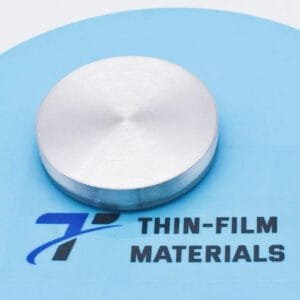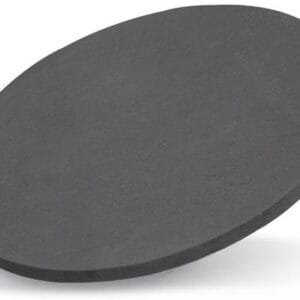Neodymium Fluoride Sputtering Target Description
Neodymium Fluoride Sputtering Target is a material used in the process of sputtering for depositing thin films onto a substrate. Neodymium fluoride is a compound composed of neodymium (Nd) and fluorine (F) ions. In the sputtering process, high-energy ions bombard the surface of the neodymium fluoride sputtering target, causing atoms or molecules to be ejected. These ejected particles then deposit onto a substrate, forming a thin film with properties inherited from the target material.
Sputtering targets come in different shapes and sizes based on the requirements of the thin film deposition process and the sputtering equipment used. The choice of a neodymium fluoride sputtering target depends on the desired properties of the thin film and its intended applications, which may include optics, electronics, or other advanced materials.
Related Product: Neodymium Strontium Manganate Sputtering Target
Neodymium Fluoride Sputtering Target Specifications
| Compound Formula | NdF3 |
| Molecular Weight | 201.24 |
| Appearance | Gray target |
| Melting Point (℃) | 1,374 |
| Density (g/cm3) | 6.5 |
| Available Sizes | Dia.: 1.0″, 2.0″, 3.0″, 4.0″, 5.0″, 6.0″ Thick: 0.125″, 0.250″ |
Neodymium Fluoride Sputtering Target Handling Notes
Indium bonding is recommended for Neodymium Fluoride Sputtering Targets due to the material’s characteristics that may pose challenges during sputtering, such as brittleness and low thermal conductivity. Neodymium fluoride has low thermal conductivity and is susceptible to thermal shock, making indium bonding a suitable choice to mitigate these issues and ensure effective sputtering performance.
Neodymium Fluoride Sputtering Target Application
Neodymium Fluoride Sputtering Target Packaging
Our Neodymium Fluoride Sputtering Target is widely used in the production of coatings for diverse applications, including enhancing optical properties, improving the performance of semiconductor devices, and supporting research and development projects. Its versatility makes it suitable for various uses, such as improving the wear resistance of tools, enhancing the durability of surfaces, or achieving specific optical and electrical characteristics in thin films.
Get Contact
TFM offers Neodymium Fluoride Sputtering Targets in various forms, purities, sizes, and prices. We specialize in high-purity thin film deposition materials with optimal density and minimal grain sizes, which are ideal for semiconductor, CVD, and PVD applications in display and optics. Contact Us for current pricing on sputtering targets and other deposition materials that are not listed.





Reviews
There are no reviews yet.